Parts washing is one of the last, but one of the most important, industrial manufacturing processes. The concept of parts washers is not a complicated one. Parts washers are industrial washers that clean, degrease, and dry industrial parts and furniture of all shapes and sizes. Read More…
Niagara Systems LLC has offered turnkey custom parts washing systems for over 80 years. With our customization capabilities, our parts washing systems stand out from the competition.
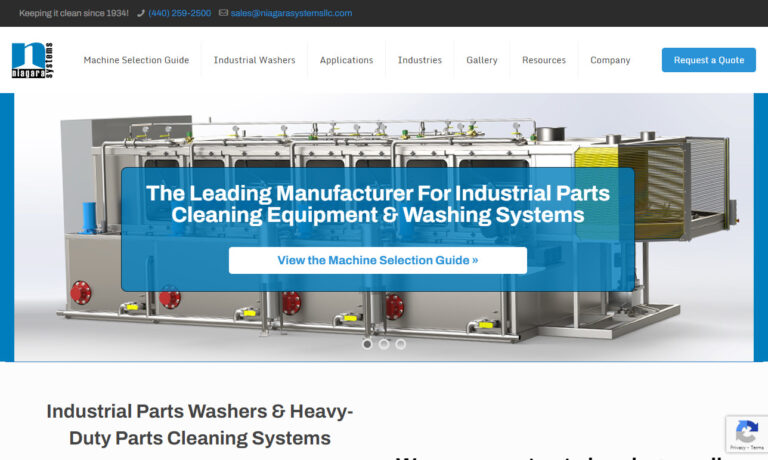
Great Lakes Finishing Equipment, Inc. specializes in supplying parts washers for even the most demanding cleaning jobs. Equipment includes table washers, drum washers, aqueous rotary baskets, aqueous belt washing systems, & more. Let our parts washing specialists assist you with your specific washing applications. Contact us today for all of your parts washer needs.
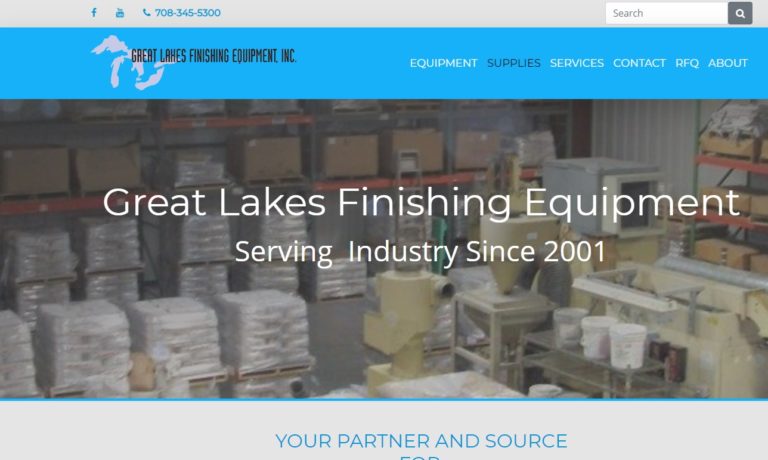
Need help with a parts washer to clean your dirty parts? Contact StingRay to get a quote for an engineered parts washer. StingRay Parts Washer offers a complete solution to your cleaning needs which includes fixturing of your parts, industry approved detergent, engineered parts washer, and the most complete customer service in the industry.
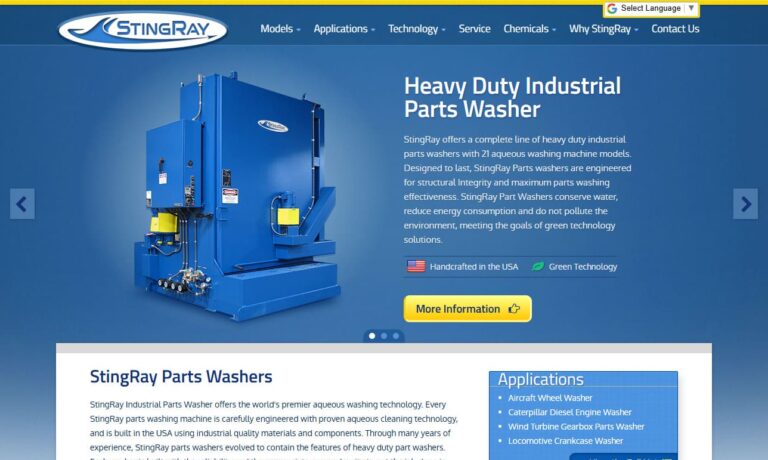
More Parts Washer Manufacturers
Parts washers effectively remove various contaminants, such as carbon, oil, grease, grime, and dirt, from different parts. Commonly used in the industrial, automotive, medical, and electronic industries, these washers prepare parts for surface cleaning, finishing, and distribution. They are essential for cleaning and treating parts like bolts, nuts, fasteners, screws, diesel engine blocks, automotive assemblies, rail bearings, and wind turbine gearboxes. Clean parts are crucial for processes like surface cleaning, painting, powder coating, zinc coating, electroplating, and lubrication.
History of Industrial Parts Washers
Before industrial washers, mechanics used “soak tanks” filled with detergent and water, where parts soaked for several hours. In the mid-1900s, auto mechanics and engineers developed industrial parts washing to improve this inefficient method. The first parts washers used solvents such as benzene, xylenes, mineral spirits, naphtha, or organic trichloroethylene, along with a pump and a drum. Mechanics placed dirty parts in a drum washer or rotary drum washer, where a low-amp, flame-tight electric pump sprayed the solvent to clean them effectively.
Early methods, though more effective than soak tanks, were environmentally unfriendly. By the late 1960s, increasing environmental awareness prompted manufacturers to adopt safer and less impactful methods. The initial shift was from petroleum-based solvents like diesel, gasoline, and kerosene to more benign degreasers, such as chlorinated solvents and vapor degreasers. In the 1980s, due to environmental and safety concerns, governments banned chlorinated solvents. This led to the adoption of aqueous-based cleaning solutions, developed by Gary Minkin in 1971. These solutions became the industry standard post-ban, proving highly effective and spurring innovations like hydraulic impact pressure in parts cleaning.
Since the 1980s, parts cleaning has significantly advanced in effectiveness, efficiency, and environmental sustainability. Modern technology has made water-based cleaning solutions as effective as chemical alternatives, promoting healthier options on a larger scale. The latest innovations include biomatic parts that use a PH-neutral cleaning solution and microbe colonies to naturally and safely break down contaminants like oil and grease. Additionally, the integration of CNC programming has made the parts washing process easier, faster, and less labor-intensive.
How Parts Washers Work
Industrial parts washers, though varied in design, generally operate as follows: Parts are placed on a system belt or in a vat. Solvents, vapors, hot water, acids, and detergents are then used to break down and remove contaminants. Brushes and scrubbers assist in dislodging stubborn residues. A filtration system collects all debris and waste generated during this process.
Types of Parts Washers
These machines come in manual, semi-automatic, and fully automatic styles, with the latter being the most prevalent. However, parts washers are more commonly categorized by the type of cleaner used or the cleaning method. Cleaners include aqueous washers, solvent cleaners, and semi-aqueous cleaners. Cleaning methods encompass immersion washers, agitating washers, ultrasonic washers, spray washers, rotary washers, drum washers, and green parts washers.
Aqueous Cleaner (Aqueous Part Washer)
Aqueous cleaning systems, which are water-based parts washers, are widely used in industrial cleaning. These systems utilize water, detergent, and acidic or alkaline compounds to clean industrial equipment. While aqueous parts washers can replace solvent-based cleaners, they require technical adjustments to achieve the same cleaning effectiveness. Additionally, wastewater from these systems must be thoroughly filtered to remove contaminants like oil, grease, and toxins, which can negatively impact the environment.
Solvent Cleaner (Solvent Part Washer)
Solvent cleaners, also known as chlorinated solvent vapor degreasers, are highly effective for cleaning parts. They use chlorinated solvents like trichloroethylene and methylene, significantly reducing vapor and grease during the cleaning process. However, they are less efficient in controlling waste production compared to other cleaning methods. Due to the use of highly flammable solvents, operators must be properly trained and certified to ensure safe operation.
Semi-Aqueous Cleaner
Semi-aqueous cleaners, which can be diluted with water or used in concentrated form, are known for their versatility. However, due to their high toxicity and potential to cause water pollution, waste from the semi-aqueous cleaning process must be carefully treated and filtered.
Immersion and Agitating Washers
Immersion washers are parts washers that use immersion techniques. These can range from simple trays or baskets for submerging parts in water or solvent, to complex systems with multiple stages and specialized processes. Agitating washers are highly efficient immersion washers that clean parts by immersing them in a solvent and agitating them with paddles or impellers to remove contaminants.
Ultrasonic Washer
Ultrasonic washers utilize high-frequency sound waves and vibrations to generate microscopic bubbles and blasts, effectively removing contaminants from surfaces. This technology, which often incorporates solvents, has gained widespread popularity due to its environmentally friendly and safe approach to precision cleaning. Ultrasonic cleaning can function as a standalone process or be integrated into existing aqueous or semi-aqueous cleaning systems, providing versatile application options.
One of the key advantages of ultrasonic cleaners is their ability to thoroughly clean even the smallest and most inaccessible areas of a product. This makes them particularly valuable for industries that require meticulous cleaning standards. Ultrasonic cleaning is especially beneficial for maintaining jewelry, heat exchangers, delicate electronic components, watches, weaponry, precision tools, and dental and medical instruments, ensuring they remain free of contaminants and operate at peak efficiency.
High Pressure Spray Washer
This pressure washer is designed with a cabinet-like structure and incorporates a built-in conveyor belt system. The conveyor belt efficiently transports parts through the cleaning process, where they are subjected to high-pressure water jets or aqueous-based chemical sprays. These jets are strategically positioned at various angles to ensure thorough and effective cleaning from all directions.
Rotary Washer
Rotary washers are specialized machines engineered to clean various components through a process of tumble washing, rinsing, and drying. These washers are typically tailored to meet the specific requirements of their intended applications. For instance, certain rotary washers are designed to handle the cleaning of large automotive parts, such as engines and transmissions. On the other hand, some washers are optimized for processing substantial quantities of smaller items, like bolts and fasteners. This customization ensures efficient and thorough cleaning, regardless of the part size or volume.
Drum Washer
Drum washers are specialized industrial cleaning systems designed specifically for the thorough washing of drums, pails, and barrels. These containers, often used in industrial processes, store and transport various materials and chemicals, including inks, grease, and adhesives, which must be meticulously removed after each use. Effective drum washers are engineered to clean both the interior and exterior surfaces of the drums. This is achieved through advanced cleaning mechanisms, such as spray or rotary washer equipment equipped with nozzles, ensuring comprehensive and efficient cleaning.
Green Parts Washer
Manufacturers seeking to reduce their carbon footprint can adopt green parts washing with biomatic technology. This method uses microbes in a pH-neutral solution to break down oil, grease, and contaminants. The process converts hydrocarbons into reusable carbon dioxide and water, sustained by oxygen. This environmentally friendly approach is low-maintenance, energy-efficient, chemical-free, and highly cost-effective due to the reusable solution.
Parts Washers Components
In addition to the washer, parts cleaning equipment encompasses various components essential for efficient operation. This includes a water heater, a cabinet (also referred to as a housing or enclosure), pumps, scrubbers, nozzles, brushes, and a filtration system. Pumps play a critical role in enhancing the system’s ability to eliminate contaminants by increasing the pressure delivered to the scrubbers, sprayers, and brushes. The filtration system is integral to maintaining optimal performance by capturing residual debris and waste, ensuring the equipment functions smoothly and effectively.
How to Use Parts Washers
- Wash After Every Production Cycle: Clean machine parts after each cycle. Study our tips for confidence.
- Start with Deburring: Remove rough edges before washing. Deburring enables smooth cleaning and prevents issues from burrs on machined parts.
- Avoid Overfilling the Washer: Clean fewer parts at a time. Overfilling can reduce cleaning efficiency, especially with aqueous and basket-style conveyor washers.
- Use the Right Washer: Match parts to the appropriate cleaning appliance. Incorrect equipment increases power and labor costs and affects cleaning results.
- Test Part Cleanliness: Check cleanliness before and after washing. Use visual inspection or testing utilities for hard-to-reach areas. Hydrocarbon cleaners are useful, or hire professionals.
- Extend Solvent Life: Increase solvent lifespan to reduce costs. Inspect parts before cleaning, avoid unnecessary cleaning, and remove dust and pollutants with brushes and scrapers first.
- Use Filtration Systems: Implement air and water filters to reduce contaminants and production costs. Consider part washers with built-in filtration.
- Choose High Flash Point Solvents: Opt for solvents with a flash point over 140°F to reduce evaporation and odor, saving costs.
- Control Solvent Tank Emissions: Keep the reservoir lid tightly closed to prevent solvent loss.
- Keep Debris Away from Cleaning Basin: Avoid placing rags and towels near the drain to prevent solvent wastage and increased production costs.
Benefits of Parts Washers
Industrial part washers offer numerous benefits, making them an invaluable asset in maintaining operational efficiency. Firstly, they effectively eliminate dirt and grime, which can range from being a minor nuisance to causing significant damage. This ensures that your process machines operate smoothly and without interruption. Additionally, parts washers are characterized by their low maintenance and operating costs, providing an economical solution for businesses. They are user-friendly and can be operated with minimal manual intervention, offering flexibility in their usage. Finally, these washers are energy-efficient and provide various eco-friendly solvent and process options, contributing to sustainable practices.
Designing and Customizing Parts Washers
When designing an industrial part washer, manufacturers consider several factors. Initially, they determine the type of washer based on application requirements, including part size and shape, volume, material, industry standards, and frequency of use. Next, they decide on the machine configuration, which could include options such as a conveyor belt, robotic arms, a rotary table, a wire basket, or a cabinet. For instance, cabinets are typically made from stainless steel.
Manufacturers also evaluate whether the system should be CNC automated or if manual loading is more appropriate for the application. Additionally, they select a cleaning solution based on its effectiveness, compatibility with the parts, and environmental impact. Manufacturers can easily customize washers for your system, whether for integration into complex systems with functions like deburring, rinsing, drying, and coating, or as standalone units tailored to the size, shape, and volume of your parts load.
Purchasing Parts Washers
When evaluating a potential washer purchase, several critical factors should guide your decision. First, focus on the gallons per minute (GPM) rather than horsepower when assessing pump performance. While horsepower is often highlighted, GPM directly influences cleaning effectiveness in aqueous parts washers. Opt for higher GPM to ensure superior cleaning capabilities, even when comparing pumps of the same horsepower.
Secondly, prioritize washers equipped with efficient heating systems. Maintaining a consistent temperature of 170-175 degrees Fahrenheit is crucial for optimal washer performance. Insufficient heating can lead to downtime as personnel wait for the washer to reach operating temperature, which is particularly disruptive in busy maintenance and repair environments. By emphasizing these considerations, you can make a more informed choice tailored to your specific operational needs.
Consider the size of the reservoir. Historically, larger metal parts washers were favored to manage oil saturation issues by facilitating oil re-circulation over parts during cleaning. However, the advent of oil skimmers has minimized the relevance of large reservoirs, as they can lead to higher operational costs due to increased power consumption to maintain optimal temperatures.
Having spare parts available is crucial for uninterrupted maintenance and operational efficiency. A lack of readily accessible replacement parts can prolong downtime and escalate maintenance expenses over time. Therefore, prioritizing washers with local parts availability can mitigate long-term costs associated with maintenance. Lastly, simplicity in design is paramount for reliability and cost-effectiveness in parts cleaning equipment. While advanced, automated designs may initially appear attractive for reducing labor costs, they can prove cumbersome and costly if they fail to deliver as expected. Opting for straightforward designs minimizes the risk of operational disruptions and excessive expenditure on repairs and maintenance.
In summary, selecting an efficient parts washer involves balancing considerations such as reservoir size, spare parts availability, and design simplicity to optimize performance and minimize long-term operational costs.
Choosing a Parts Washers Manufacturers
Parts washing is a competitive industry with numerous suppliers vying for your business. To identify the right supplier for your needs, we suggest reviewing the listed companies on this page. We have curated a selection of companies that we consider to be top-tier and most suited to meet your requirements. As you review, identify three or four companies that pique your interest. Compile a list of your specifications, requirements, and questions, and contact each of these companies for further details. Compare their responses carefully to determine which one aligns best with your needs. Once you have made your decision, initiate contact with your chosen supplier to begin your partnership.
Check out our Parts Washers website
What is a parts washer and what contaminants does it remove?
A parts washer is a machine designed to remove contaminants such as carbon, oil, grease, grime, and dirt from various parts. It is commonly used for cleaning components in the industrial, automotive, medical, and electronics industries to prepare them for processes like finishing, painting, or coating.
How have parts washers evolved over time?
Parts washers have evolved from basic “soak tanks” using detergent and water to advanced machines using solvents, aqueous cleaners, and eco-friendly technologies. Over time, regulations and environmental concerns have driven the development of safer cleaning solutions, with recent innovations including biomatic cleaning and CNC automation for higher efficiency and reduced environmental impact.
What are the main types of parts washers and their cleaning methods?
The main types of parts washers include manual, semi-automatic, and fully automatic machines. They can be classified by cleaning method or solvent used, such as aqueous washers, solvent washers, semi-aqueous washers, immersion washers, agitating washers, ultrasonic washers, spray washers, rotary washers, drum washers, and green parts washers.
How do ultrasonic parts washers work and what are their advantages?
Ultrasonic parts washers generate microscopic bubbles using high-frequency sound waves and vibrations to remove contaminants from surfaces. They are valued for their ability to clean hard-to-reach and delicate areas without abrasive action, making them ideal for jewelry, electronics, medical instruments, and precision tools.
What are the benefits of using industrial parts washers?
Industrial parts washers effectively eliminate dirt and grime, ensuring process machines operate smoothly and efficiently. They offer low maintenance and operating costs, are user-friendly, require minimal manual intervention, and are available in energy-efficient and eco-friendly options.
What should you consider when purchasing a parts washer?
When purchasing a parts washer, consider factors such as gallons per minute (GPM) for pump performance, efficient heating systems, reservoir size, availability of spare parts, and the simplicity of the design. These factors influence cleaning effectiveness, operational reliability, and long-term maintenance costs.
How can you use parts washers more effectively?
To use parts washers effectively, clean parts after each production cycle, remove burrs before washing, avoid overfilling, select the appropriate washer for your parts, test cleanliness regularly, extend solvent life, use filtration systems, choose high flash point solvents, control emissions by keeping lids closed, and keep debris away from the cleaning basin.
What are green parts washers and what makes them environmentally friendly?
Green parts washers utilize biomatic technology, using microbes in a pH-neutral solution to break down oil, grease, and contaminants. This process converts hydrocarbons into reusable carbon dioxide and water, offering a chemical-free, energy-efficient, low-maintenance, and cost-effective cleaning method that reduces environmental impact.

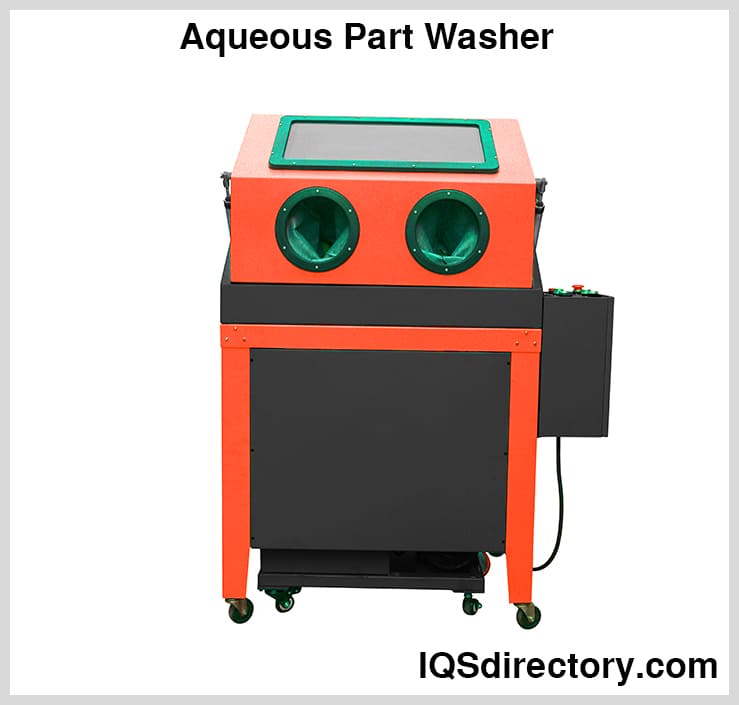
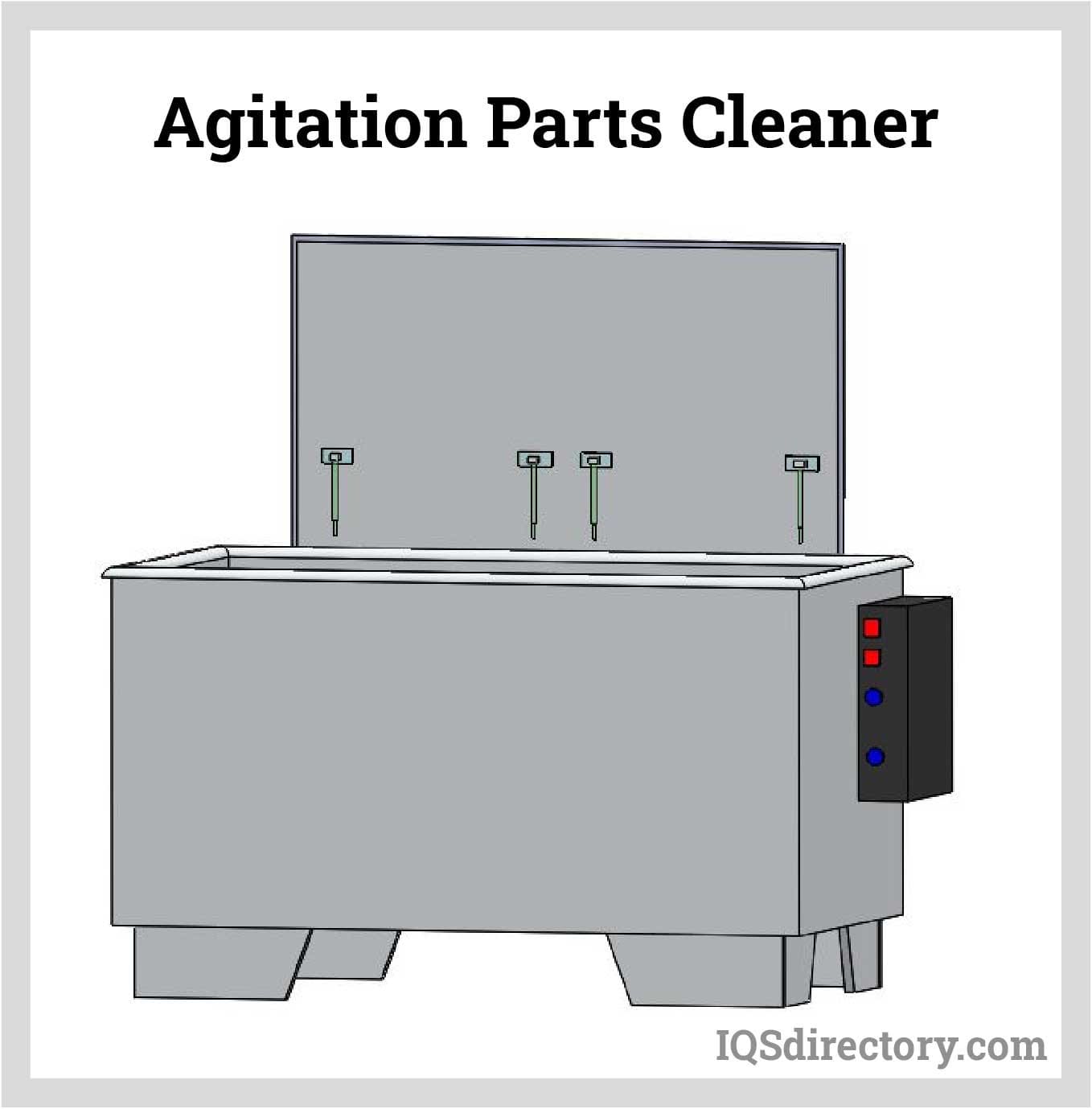
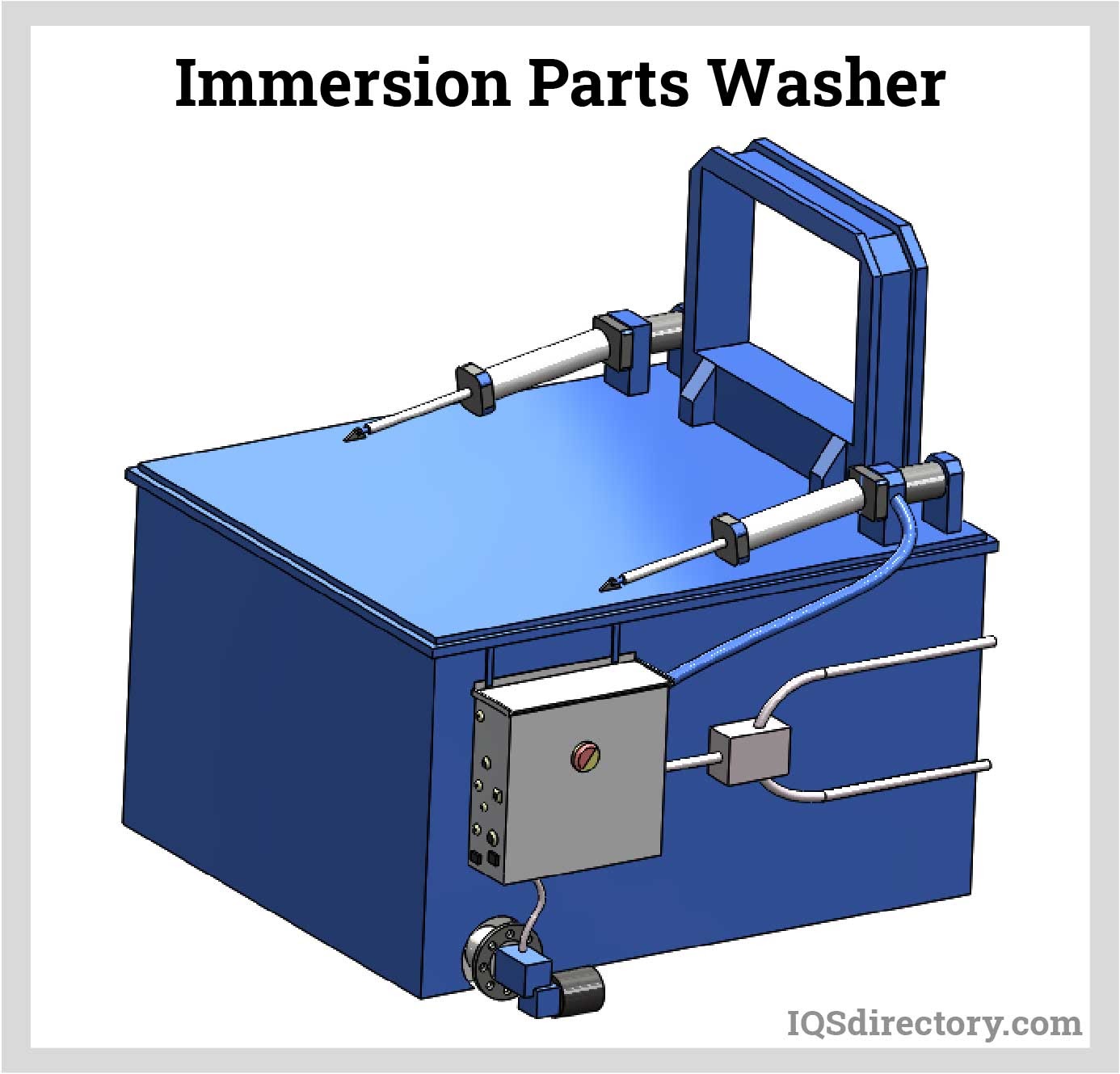
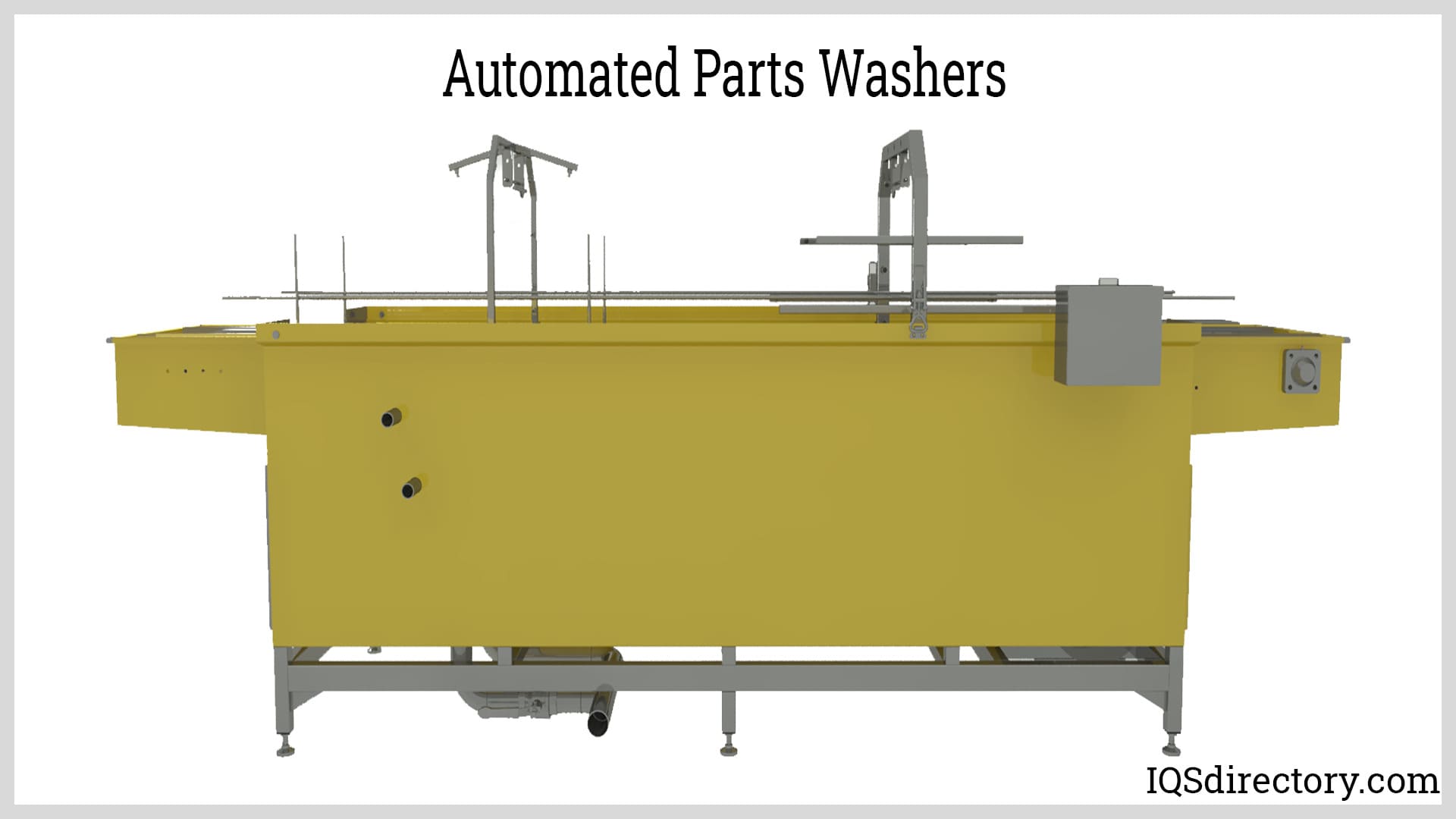
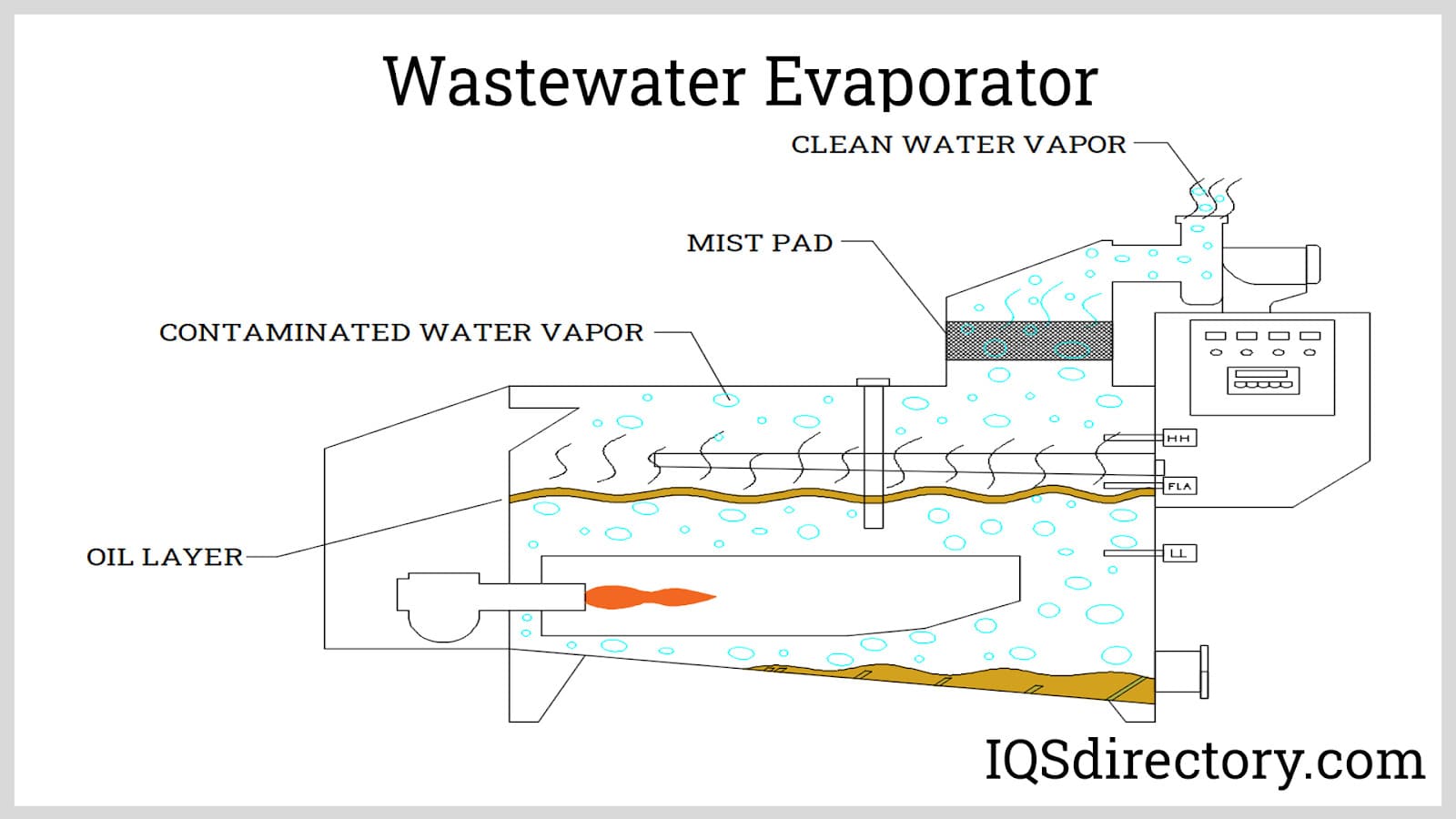
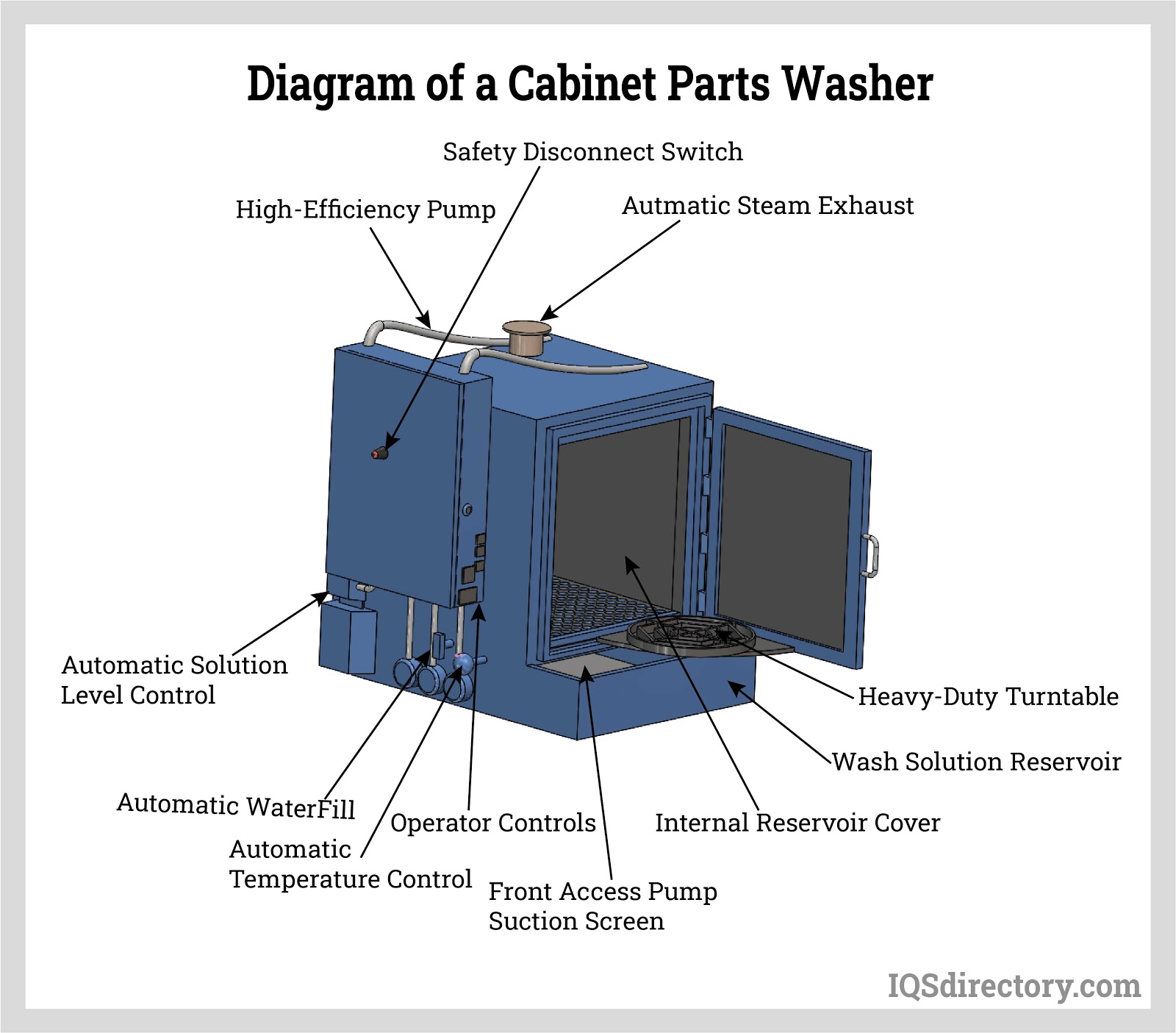
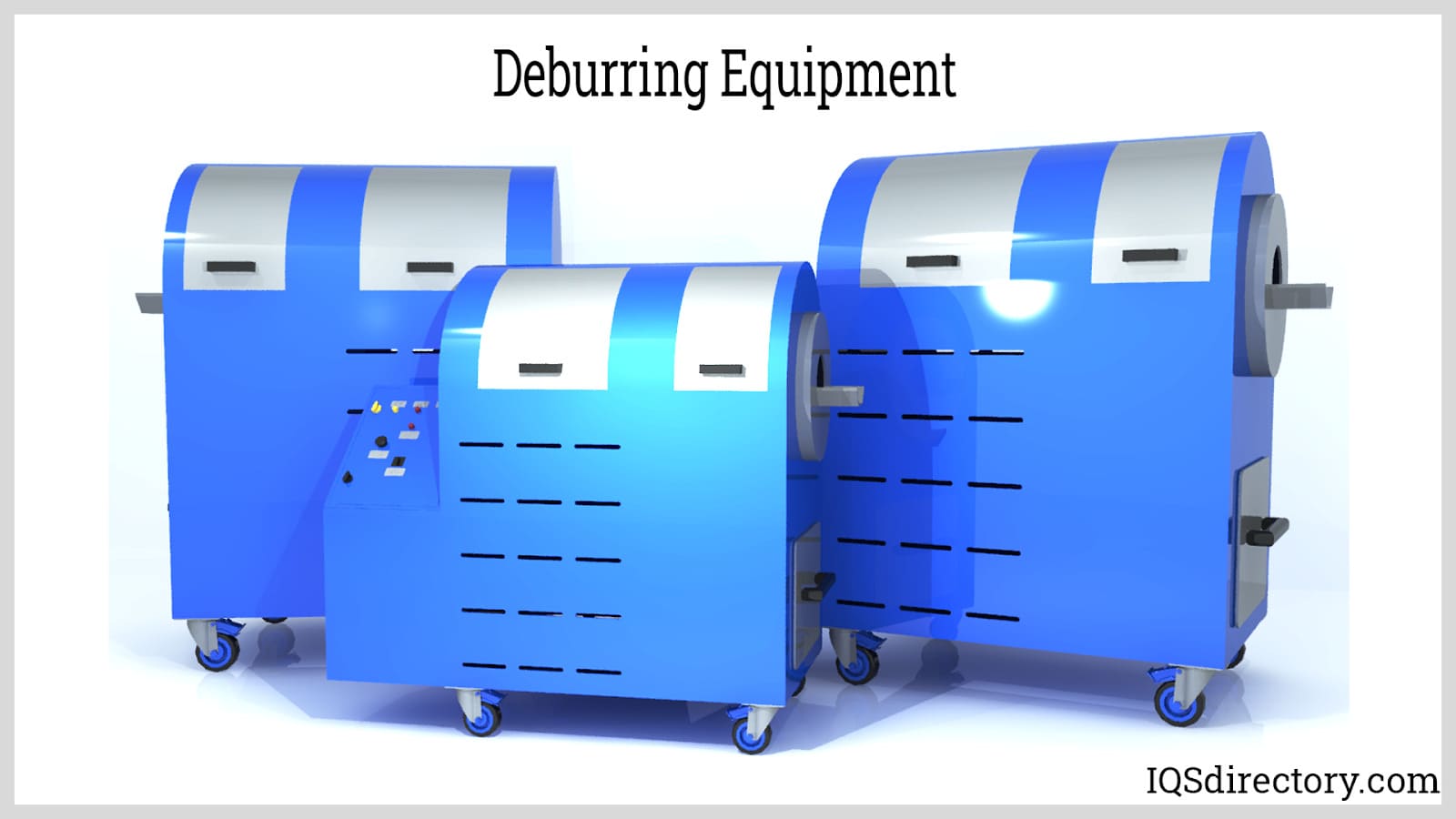
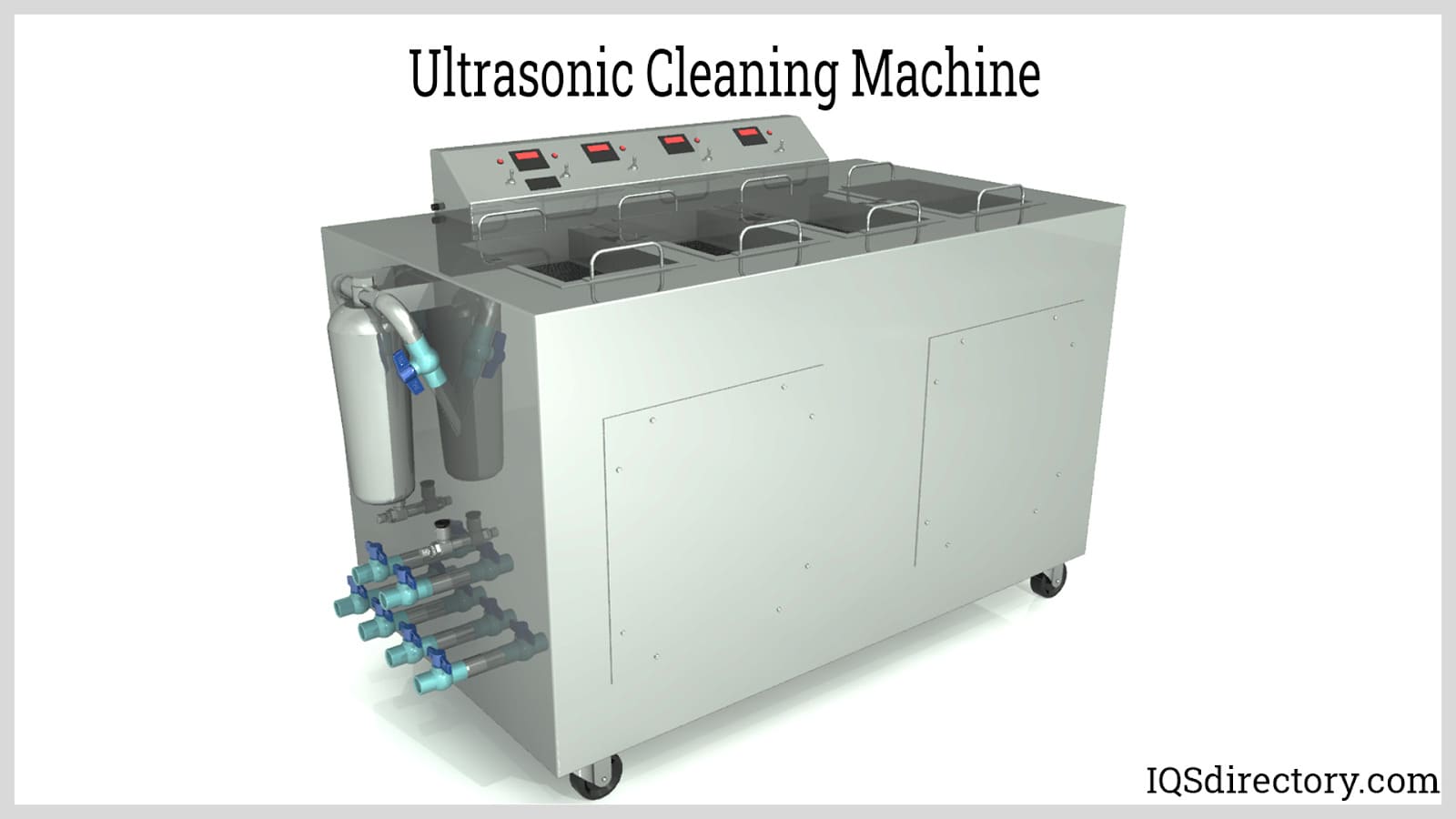
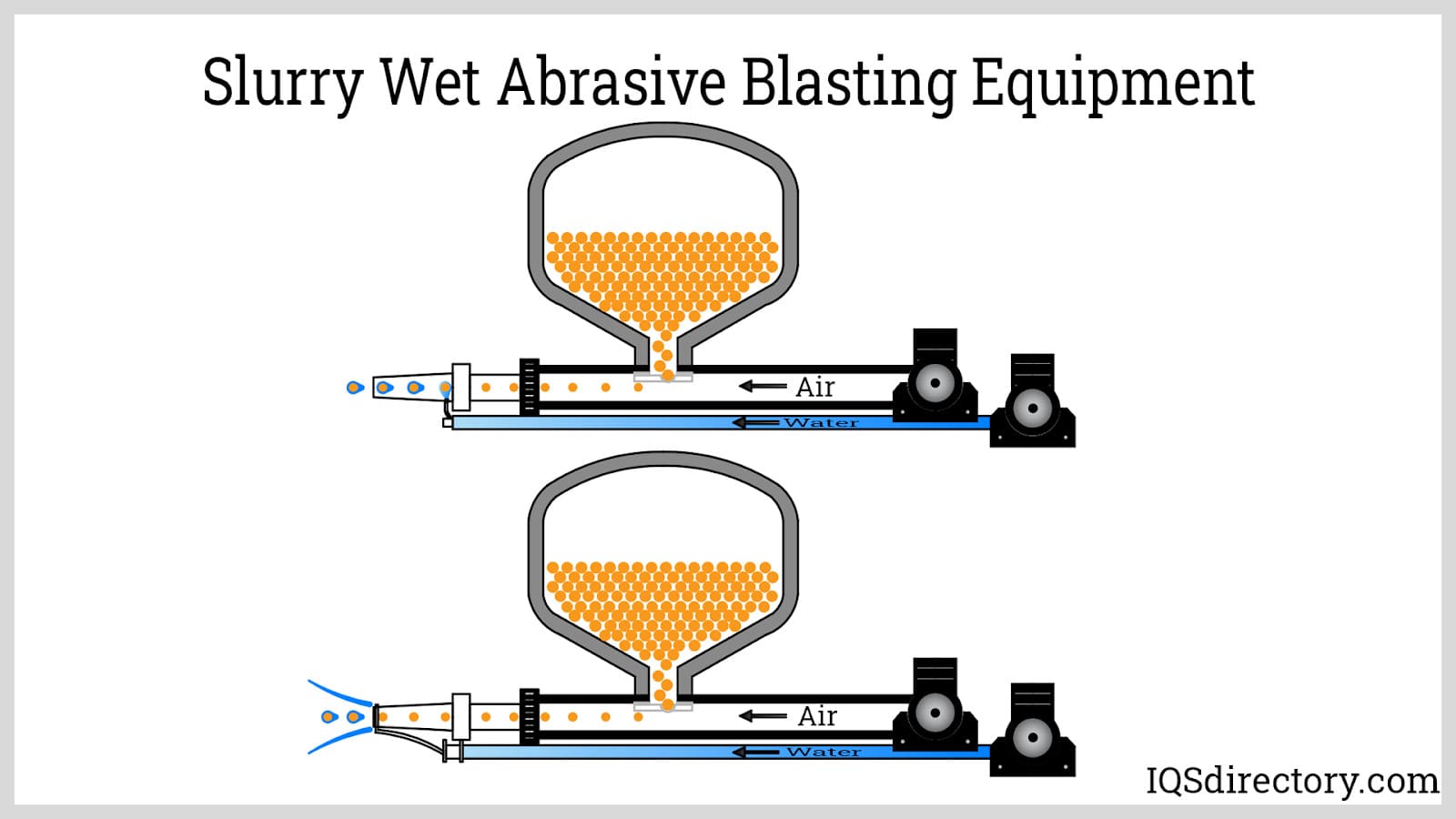
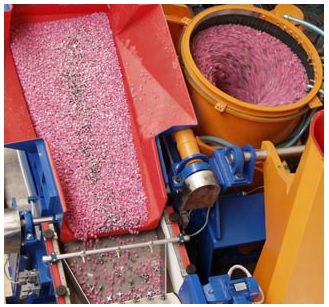 Deburring Machinery
Deburring Machinery Industrial Parts Washers
Industrial Parts Washers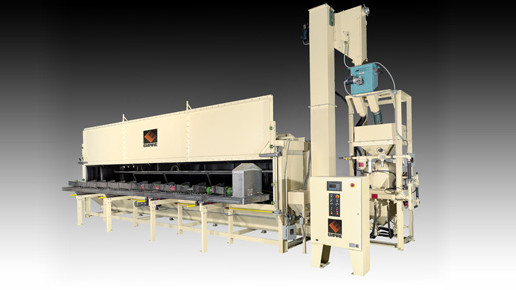 Sandblast Equipment
Sandblast Equipment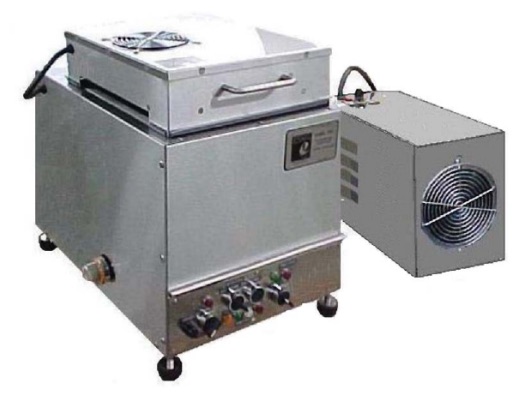 Ultrasonic Cleaners
Ultrasonic Cleaners Castings & Forgings
Castings & Forgings Bulk Material Handling
Bulk Material Handling Electrical & Electronic Components
Electrical & Electronic Components Flow Instrumentation
Flow Instrumentation Hardware
Hardware Material Handling Equipment
Material Handling Equipment Metal Cutting Services
Metal Cutting Services Metal Forming Services
Metal Forming Services Metal Suppliers
Metal Suppliers Motion Control Products
Motion Control Products Plant & Facility Equipment
Plant & Facility Equipment Plant & Facility Supplies
Plant & Facility Supplies Plastic Molding Processes
Plastic Molding Processes Pumps & Valves
Pumps & Valves Recycling Equipment
Recycling Equipment Rubber Products & Services
Rubber Products & Services